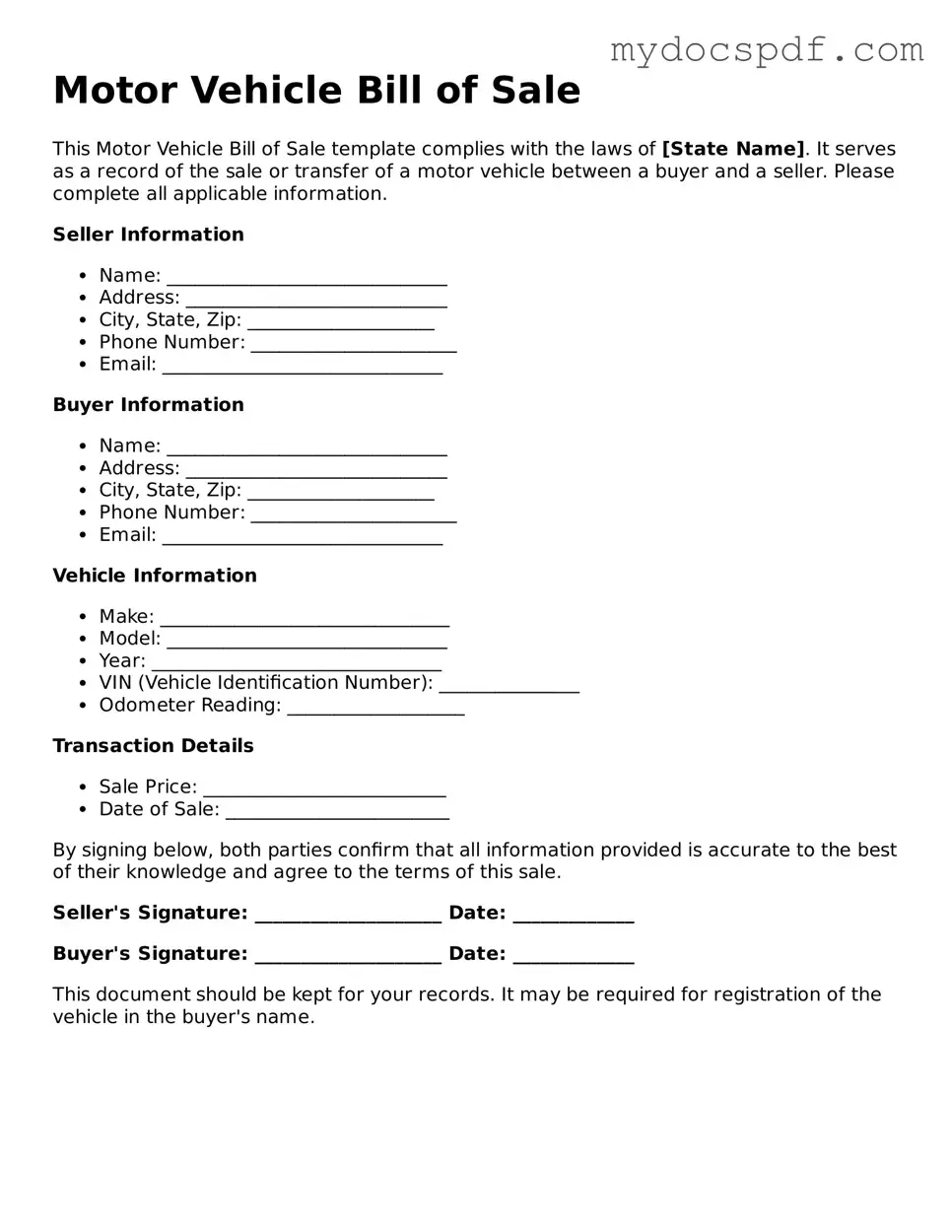Motor Vehicle Bill of Sale
This Motor Vehicle Bill of Sale template complies with the laws of [State Name]. It serves as a record of the sale or transfer of a motor vehicle between a buyer and a seller. Please complete all applicable information.
Seller Information
- Name: ______________________________
- Address: ____________________________
- City, State, Zip: ____________________
- Phone Number: ______________________
- Email: ______________________________
Buyer Information
- Name: ______________________________
- Address: ____________________________
- City, State, Zip: ____________________
- Phone Number: ______________________
- Email: ______________________________
Vehicle Information
- Make: _______________________________
- Model: ______________________________
- Year: _______________________________
- VIN (Vehicle Identification Number): _______________
- Odometer Reading: ___________________
Transaction Details
- Sale Price: __________________________
- Date of Sale: ________________________
By signing below, both parties confirm that all information provided is accurate to the best of their knowledge and agree to the terms of this sale.
Seller's Signature: ____________________ Date: _____________
Buyer's Signature: ____________________ Date: _____________
This document should be kept for your records. It may be required for registration of the vehicle in the buyer's name.
